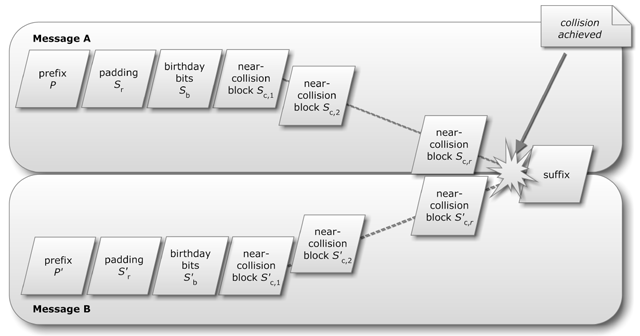Crypto breakthrough shows Flame was designed by world-class scientists | Ars Technica

The Flame espionage malware that infected computers in Iran achieved mathematic breakthroughs that could only have been accomplished by world-class cryptographers, two of the world’s foremost cryptography experts said.
“We have confirmed that Flame uses a yet unknown MD5 chosen-prefix collision attack,” Marc Stevens wrote in an e-mail posted to a cryptography discussion group earlier this week. “The collision attack itself is very interesting from a scientific viewpoint, and there are already some practical implications.” Benne de Weger, a Stevens colleague and another expert in cryptographic collision attacks who was briefed on the findings, concurred.
“Collision” attacks, in which two different sources of plaintext generate identical cryptographic hashes, have long been theorized. But it wasn’t until late 2008 that a team of researchers made one truly practical. By using a bank of 200 PlayStation 3 consoles to find collisions in the MD5 algorithm—and exploiting weaknesses in the way secure sockets layer certificates were issued—they constructed a rogue certificate authority that was trusted by all major browsers and operating systems. Stevens, from the Centrum Wiskunde & Informatica in Amsterdam, and de Weger, of the Technische Universiteit Eindhoven were two of the seven driving forces behind the research that made that 2008 attack possible.
Flame is the first known example of an MD5 collision attack being used maliciously in a real-world environment. It wielded the esoteric technique to digitally sign malicious code with a fraudulent certificate that appeared to originate with Microsoft. By deploying fake servers on networks that hosted machines already infected by Flame—and using the certificates to sign Flame modules—the malware was able to hijack the Windows Update mechanism Microsoft uses to distribute patches to hundreds of millions of customers.
According to Stevens and de Weger, the collision attack performed by Flame has substantial scientific novelty. They arrived at that conclusion after Stevens used a custom-designed forensic tool he developed to detect and analyze hash collisions.
“More interestingly, the results have shown that not our published chosen-prefix collision attack was used, but an entirely new and unknown variant,” Stevens wrote in a statement distributed on Thursday. “This has led to our conclusion that the design of Flame is partly based on world-class cryptanalysis. Further research will be conducted to reconstruct the entire chosen-prefix collision attack devised for Flame.”
The analysis reinforces theories that researchers from Kaspersky Lab, CrySyS Lab, and Symantec published almost two weeks ago. Namely, Flame could only have been developed with the backing of a wealthy nation-state. Stevens’ and de Weger’s conclusion means that, in addition to a team of engineers who developed a global malware platform that escaped detection for at least two years, Flame also required world-class cryptographers who have broken new ground in their field.
“It’s not a garden-variety collision attack, or just an implementation of previous MD5 collisions papers—which would be difficult enough,” Matthew Green, a professor specializing in cryptography in the computer science department at Johns Hopkins University, told Ars. “There were mathematicians doing new science to make Flame work.”
This article was updated at 11:01 am PDT on June 10 to clarify Stevens’ and de Weger’s roles and to change language in the 5th paragraph.
